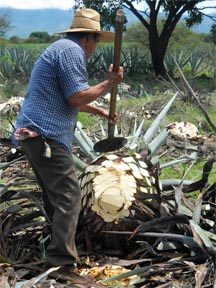What’s the Story Behind Mezcal and How Is It Made?
News Category: News and Food and Drink
-
Published November 23, 2024
Story by Marian Avila
Long before mezcal became a thing, ancient civilizations in what is now Mexico were brewing a fermented drink called pulque. This concoction was used to alter consciousness, so only priests and elders were allowed to drink it. Anyone caught sipping it outside of ceremonies could face the ultimate penalty—death!
Pulque was made from the agave plant, which was abundant in the region and also used for medicines and materials like ropes, fabrics, and paper. Even today, pulque is produced in Mexico by fermenting the piña or heart of the agave, which is roasted, crushed, and juiced before fermentation.
Then, in the 16th century, the Spanish arrived with their distillation know-how, transforming pulque into agave wine or mezcal wine. The latter term comes from two Nahuatl words: meztl (maguey) and ixcalli (to cook). The colonizers were keen on making some kind of wine with whatever was available since grapevines didn’t thrive in the area.
Today, mezcal is produced in 25 Mexican states, but only 9 have the official Denomination of Origin: Durango, Guanajuato, Guerrero, Michoacán, Oaxaca, San Luis Potosí, Tamaulipas, Zacatecas, and Puebla.


Leave a Reply